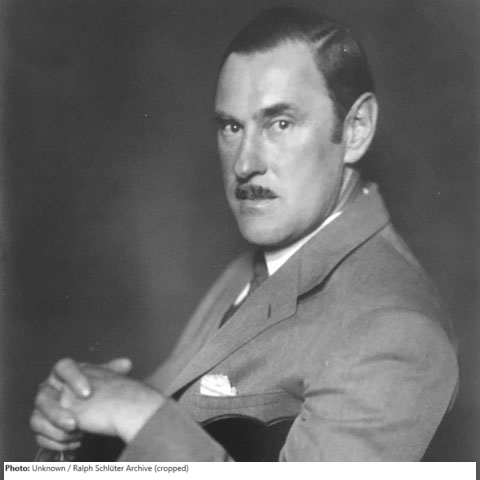
| Roles | Competed in Olympic Games |
|---|---|
| Sex | Male |
| Full name | Josef•Wackerle |
| Used name | Josef•Wackerle |
| Born | 15 May 1880 in Partenkirchen, Garmisch-Partenkirchen, Bayern (GER) |
| Died | 2 March 1959 (aged 78 years 9 months 18 days) in Garmisch-Partenkirchen, Bayern (GER) |
| NOC |  Germany Germany |
German sculptor and medalist Josef Wackerle came out of a woodcarver family and studied at the School of Applied Arts and the Academy of Arts in München. In 1903 he received the Prix de Rome and, aged only 26 years, he then became Artistic Director of the Nymphenburg porcelain manufactory in 1906. In 1913, he began teaching in Berlin at the Museum of Arts & Crafts and in 1917 in München at the School of Applied Arts. In München, he then taught at the Academy of Fine Arts from 1924-50. The Nazis appreciated his art.
One of Wackerle’s works was the sculpture Rosseführer (Horse Leader) at the Olympic Stadium in Berlin. He received the Goethe Medal on a proposal by Hitler in 1940 and was included in the list of the most important German artists in 1944. Since he was not in the Nazi party and his art had nothing to do with Nazi ideology, he was still allowed to work after the war, received many new orders, and he returned to designing majolica and porcelain figures. Wackerle then also created numerous fountains and artistic elements to buildings.
The bronze cast medal 1929 Honorary Prize of the Reich President - Constitution Day 1929 designed by Josef Wackerle had a diameter of 69 mm and a weight of 114 g. The annually re-designed medals were awarded for achievements in sports competitions on Constitution Day. His medal submitted in 1928 was one of several designs for the permanent winner’s medal of the Olympic Games.
| Games | Discipline (Sport) / Event | NOC / Team | Pos | Medal | As | |
|---|---|---|---|---|---|---|
| 1928 Summer Olympics | Art Competitions |  GER GER |
Josef Wackerle | |||
| Sculpturing, Medals And Reliefs, Open (Olympic) | ||||||
| 1932 Summer Olympics | Art Competitions |  GER GER |
Josef Wackerle | |||
| Sculpturing, Medals And Reliefs, Open (Olympic) |